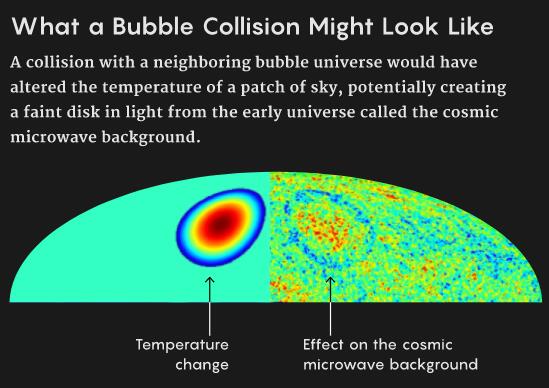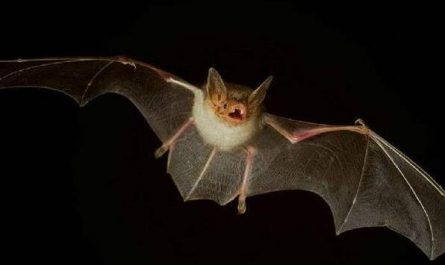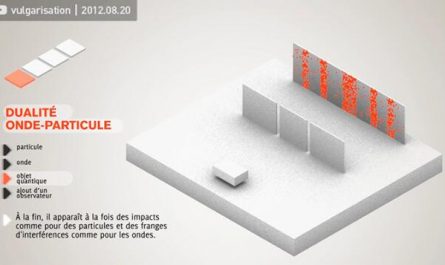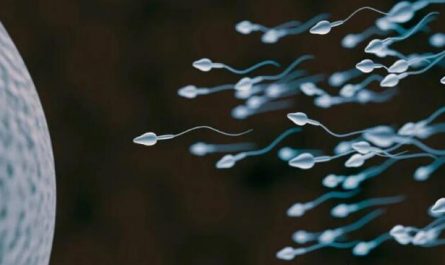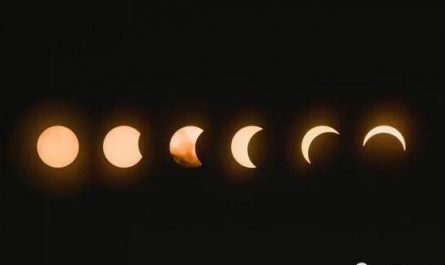What is outside of the universe we live in? This seems to be an unanswerable question. However, some cosmologists have given the answer: Our universe is an expanding bubble; outside it, there are more “cosmic bubbles”, all of which are immersed in an ocean that is constantly expanding and full of energy. in. This is multiverse.
This concept is polarizing. Some physicists have accepted the theory of multiple universes, believing that this can explain why our universe looks so special (only certain cosmic bubbles can hold life), while other physicists have rejected this theory, believing that it makes The prediction cannot be tested (it predicts all imaginable universes). However, some researchers believe that they are only temporarily unable to calculate the precise results of the theory.
At present, multiple research teams are looking for new methods to try to accurately infer the production process of multiverse bubbles and what happens when these cosmic bubbles collide.
“The chance of success in this attempt is small,” said cosmologist Jonathan Braden of the University of Toronto in Canada. He participated in this work, but thought it was looking for evidence for “something you feel could never be verified.”
The multiverse hypothesis was put forward in the process of studying how the universe was born. In the large-scale structure of the universe, theoretical physicists have discovered signs of explosive expansion at the beginning of the universe. In the early 1980s, when physicists were studying how the universe started and stopped inflation, a disturbing picture emerged. Researchers realized that although our universe (the cosmic bubble we are in) and other universes (other cosmic bubbles) ceased to inflate, quantum effects should continue to expand most of the space. This is the so-called “Eternal inflation” theory.
True vacuum and false vacuum
The difference between a cosmic bubble and its surroundings is the energy of the space itself. When the space is as empty as possible and it is impossible to lose more energy, it reaches what physicists call a “true vacuum” state. You can imagine a ball on the floor, it will not continue to fall. However, the system may also exhibit a “false vacuum” state. Imagine putting a ball in a bowl on the table. It can roll around while staying away from time to time. If enough vibration is applied, the ball may fall on the floor and reach a “true vacuum” state.
In the context of cosmology, space will also fall into a “false vacuum” state. A tiny false vacuum occasionally relaxes and becomes a true vacuum—perhaps through random quantum events—and this true vacuum expands outward like a bubble, “eaten” the excess energy of the false vacuum. This process is called It is “false vacuum decay”. Perhaps it was this process that gave our universe the birth of the Big Bang. Hilania Perris, a cosmologist at University College London, said: “The first event in the history of our universe may be a vacuum bubble.”
But physicists have made great efforts to predict the behavior of vacuum bubbles. The future of a vacuum bubble depends on the accumulation of countless tiny details. Bubbles also change very quickly. When they expand outward, the speed of the bubble wall can approach the speed of light; at the same time, these bubbles also have the randomness and wave nature of quantum mechanics. Different assumptions about these processes give conflicting predictions, and we cannot judge which ones are closest to reality. According to Braden, this is like “you knead a lot of problems that are difficult for physicists to deal with, and then say, ‘go, figure out what happened’”.
Simulated vacuum bubble
Obviously, it is impossible for physicists to pierce the vacuum bubbles in the multiverse, but they are always looking for mathematical and physical methods to simulate these bubbles.
Physicists are performing mathematical and physical simulations of the expansion and collisions of the multiverse. A collision with a bubble in the neighboring universe may change the temperature of a certain area on the outer wall of the bubble, thus forming a dark area of light in the early universe. That is, cosmic microwave background physicists are doing mathematics and physics on the expansion and collision of the multiverse simulation. The collision with the neighboring cosmic bubble may change the temperature of a certain area on the outer wall of the bubble, thus forming a dark area of light in the early universe, the cosmic microwave background
Recently, a research team induced a vacuum bubble-like behavior through a simple simulation. Researchers, including John Preskill, a famous theoretical physicist at the California Institute of Technology, started with “the most advanced version of this problem you can think of,” as co-author Ashley Millstead said : A string of about 1000 numeric arrows that can point up or down. Where a string of arrows that almost all face upwards meets a string of arrows that almost all face downwards, a bubble outer wall is formed. By flipping the arrow, researchers can make the outer wall of the bubble move and collide. Under certain circumstances, this model perfectly simulates the behavior of more complex systems in nature. Researchers hope to use it to simulate the process of false vacuum decay and bubble collision.
At first, this simple setup model did not operate according to actual conditions. When the outer walls of the bubbles collide together, they bounce perfectly, without complex reverberation or particle outflow as expected (shown as arrows flipping like ripples). But after adding some mathematical elements, the research team discovered that high-energy particles were ejected from the outer wall of the collision-as the collision became more and more violent, more and more particles were ejected.
However, these results published in a preprinted paper in December 2020 indicate that traditional calculation methods have entered a dead end on this issue. The researchers found that as the resulting particles mix together, they “entangle” and enter a shared quantum state. Every time a particle is added, the complexity of their state increases exponentially, and even the most powerful supercomputer cannot simulate it.
The researchers said that for this reason, further discoveries about bubble behavior may have to wait until quantum computer technology matures. The computing elements (qubits) of such computers can handle quantum entanglement because they themselves rely on quantum entanglement for calculations.
At the same time, other researchers have taken a different approach, hoping that nature can help them solve this mathematical problem. Physicists Michael Spanowski and Steven Abel of Durham University in the United Kingdom believe that they can avoid complex calculations with a device that follows the same quantum rules as the vacuum state. “If you can encode this system on a naturally implemented device, there is no need to perform calculations,” Spanowski said. “This is more like an experiment than a theoretical prediction.”
Such equipment is called a “quantum annealer”. This is a restricted quantum computer that specifically solves the optimization problem by finding the lowest energy state of the qubit-a process that is very similar to false vacuum decay.
Abel and Spanowski used a commercial quantum annealing device called “D-Wave” to write a sequence of about 200 qubits to simulate a higher and lower energy state Quantum field is similar to false vacuum and true vacuum. Then, they let the system loosen and observe how the former decayed into the latter, which eventually led to the birth of the vacuum bubble.
They described this experiment in a preprinted paper published in June 2020, but they only verified the known quantum effects and did not reveal any new findings about vacuum decay. However, researchers hope that D-Wave will eventually be used to surpass current theoretical predictions step by step.
The third method is to abandon the computer and directly form a bubble. Quantum bubbles that expand at close to the speed of light are not easy to obtain, but in 2014, physicists in Australia and New Zealand proposed a way to create such bubbles in the laboratory. They used a strange state of matter, the Bose-Einstein condensate (BEC). When a mass of rarefied gas is cooled to near absolute zero, it can condense into a BEC, and has rare quantum mechanical properties, including the ability to interfere with another BEC, just like the interference between two laser beams. The research team predicts that if two condensed matter interfere with each other in a proper way, the experimenters should be able to capture direct images of bubbles formed from the condensed matter-these bubbles behave similarly to the hypothetical bubbles in multiverse theory .
Perris said: “Because this is an experiment, it contains all the physical laws that nature wants to put in, including quantum effects and classical physical effects.” A team of physicists led by Perris is studying how to stabilize condensed matter mixtures. Prevent collapse caused by irrelevant effects. After years of hard work, she and her colleagues finally set out to prepare prototype experiments, hoping to blow out condensed bubbles in the next few years.
If all goes well, this experiment will answer two questions: the speed at which bubbles are formed, and how the expansion of one bubble changes the probability of another bubble nearby. Braden contributed to the theoretical foundation of this experiment. He pointed out that these problems cannot even be expressed in existing mathematical language.
This information will help cosmologists such as Braden and Perris to accurately calculate how a nearby cosmic bubble would collide with our universe in the distant past. Such collisions may leave scars, which may be a circular cold spot in the sky. Perris and other researchers have been looking for such cold spots, but have not found them yet. Other details, such as whether the collision will also produce gravitational waves, etc., depend on the specific circumstances of the unknown bubble.
Even if the multiverse is just a mirage, physicists may still benefit from tools developed to explore this hypothesis. To understand the multiverse is to understand the ubiquitous space physics.
False vacuum decay “seems to be a universal feature of physics,” Perris said. “I personally don’t believe that theoretical calculations on paper can solve this problem.”
